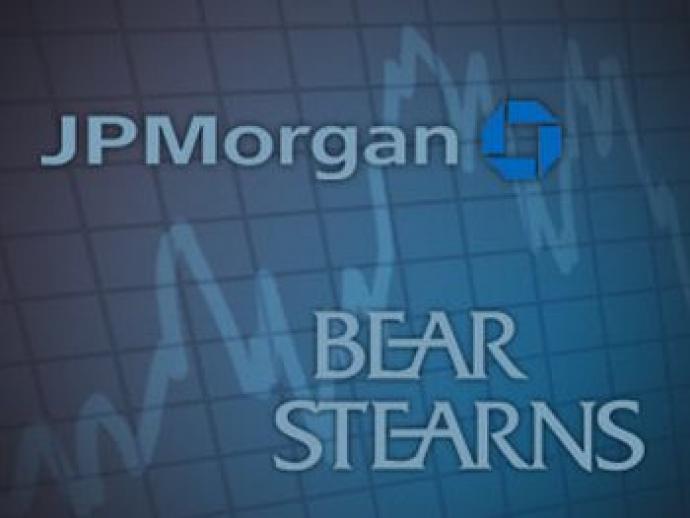In January 2007, Bear Stearns was valued at $20 billion. By Friday, March 14, 2008, it was worth $3.5 billion. Three days later, on Monday, March 17, the company was acquired by JP Morgan for $236 million.
At the time, the massive collapse was believed to be “just” the result of the mortgage crisis, but earlier this year allegations emerged that former Bear executives now working for Goldman Sachs, Bank of America and Ally Financial had misled investors through mortgage-backed securities they created and sold while at Bear.
Emails and internal documents show that JPMorgan knew about the fraud since it acquired an ownership interest in Bear in 2008 but deliberately hid the information from the public.
In 2008, US mortgage insurer Ambax Assurance Corporation filed a lawsuit against Bear Stearns and JP Morgan. Among the documents were emails dating back to 2005 showing Bear Stearns traders telling their superiors that they were “selling shit” to investors like Ambax.
Unfortunately for JPMorgan, in May 2010, several whistleblowers came forward and revealed that the company had falsified loan performance data and that senior traders had pocketed cash that was meant for investors.
In January, JPMorgan CEO Jamie Dimon said it would take years to address all of the mortgage litigation risk the bank inherited when it bought Bear Stearns and that the bank was setting aside $9 billion for litigation-related exposure.
Teri Boer, a freelance financial investigative journalist, said more than a dozen new whistleblowers have come forward to authorities, and that “JPMorgan is showing signs of fear” as the bank's lawyers continue to try to cover up wrongdoing at Bear Stearns.
JP Morgan has every reason to be worried. It is rumored that the bank has $1 trillion in worthless notes lying around off its balance sheet. If the ongoing investigation confirms this, it could send JP Morgan's “market value” rapidly approaching its true value of zero.
Is JP Morgan too big to fail?


